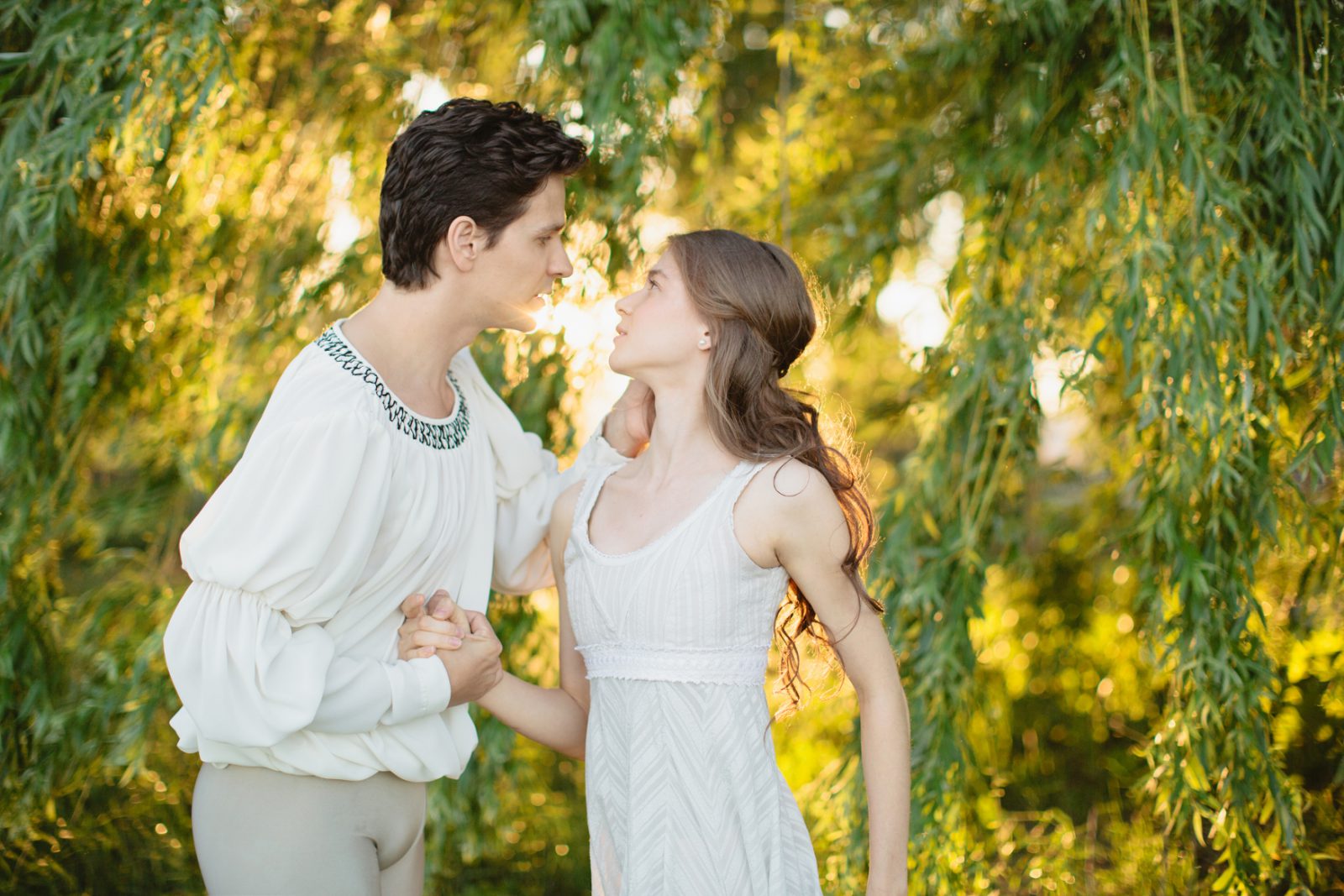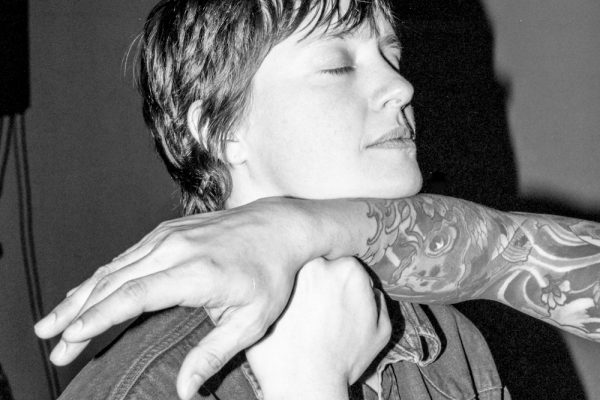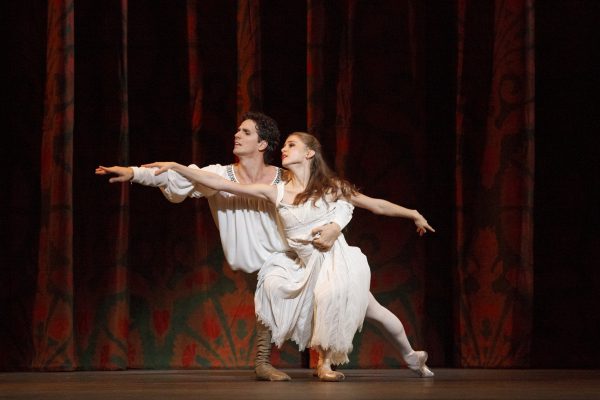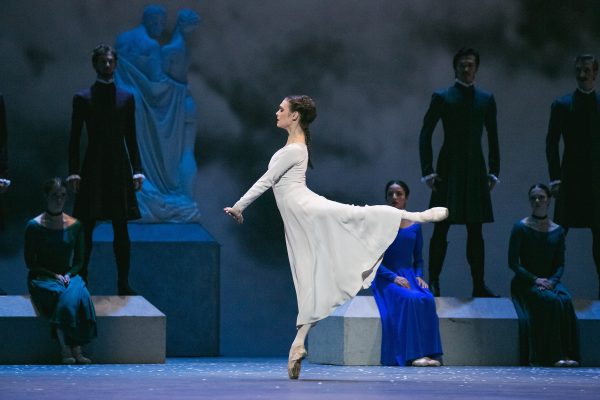Watching The National Ballet of Canada in Romeo and Juliet by Alexei Ratmansky for my first time on November 25 was a thrilling experience. Guillaume Côté and Elena Lobsanova play the lead roles in a timeless story of love, humour, tragedy and a deadly blood feud, danced to the famous score by Sergei Prokofiev.
Ratmansky, currently artist-in-residence at the prestigious American Ballet Theatre, choreographed this piece for the National Ballet’s sixtieth anniversary in 2011. Ratmansky gives intricate movement sequences to all primary, secondary and tertiary characters. Past reviews have either dismissed or appreciated the inclusion of all characters as the ballet toured to other cities. Recent reviews, however, have noted how the production has matured with time.
Romeo and Juliet may ultimately be a duet of star-crossed lovers, but Ratmansky organizes his ballet in a series of trios. Introduced in Act I, Scene I, Romeo and his two jokey friends Mercutio (Skylar Campbell) and Benvolio (Robert Stephen) form the first significant trio in the ballet. This performance is Guillaume Côté’s passionate comeback after eleven months off due to injury. A powerful dancer, Côté is not separate from his character. He is Romeo. Campbell ignites laughter with his comedic staccato steps and unpredictable antics as his vibrant character finds any excuse to dance, mock and fight. The most stunning dance by this trio is their stealthy steps as they prepare to sneak into the Capulet ball. Their feet move quickly on tiptoe as they crouch in unison like three mice at play. The audience can see their scheming eyes despite the masks they wear.
Juliet’s introduction in Act I, Scene II, involves a trio as well. Lobsanova begins with mincing pas de chats, joined by her faithful nurse (Lorna Geddes). Lady Capulet (Stephanie Hutchison) enters a few moments later, and the tone and Juliet’s dancing become subdued and submissive. In this trio, Lobsanova expresses tension with jerky arm movements as she is puppeted about the stage by her mother. Juliet’s steps are rarely her own. Here Lady and Lord Capulet guide her into choreographed turns and arched falls, and in Act III, she is literally carried by her suitor, Paris (Giorgio Galli), and her father (Etienne Lavigne). Juliet’s parents and Paris form their own trio at points, excluding Juliet as they push her within an out-of-control circle.
In the balcony scene, Juliet dramatically leaps through the garden to look for her love and is stopped softly mid-air by Romeo’s hand and brought backwards into a gentle caress. The elaborate steps Romeo dances around Juliet represent Shakespeare’s complex sentences as he dances lines from the play and their deep love is revealed.
Romeo and Juliet break from the trios that run their life to dance their own duet. Côté and Lobsanova’s steps morph from youthful to adoring as their synchronized movements express their passionate connection. They complete graceful lifts and their bodies’ proximity shows the immediacy of their love for each other. The dancing slows but increases in complexity and intensity. The audience hears the surety of their love as the dancers’ feet land in unison on the stage floor. As they consummate their marriage through dance at the beginning of Act III, the couple’s eyes lock together, only breaking when Romeo leaves the stage.
Verona’s citizens dance and fight with turns and leg extensions that abruptly start and stop, conveying the characters’ anger. For comic relief, Ratmansky introduces a quartet of street performers in stark black-and-white costumes. Their background presence highlights the comedic antics of Mercutio and Benvolio as they mercilessly tease Juliet’s nurse. This humour is short lived, however. At the end of Act II, Tybalt (Evan McKie), Romeo and Mercutio dance till only Romeo is left standing. Despite his character being violently stabbed, Campbell leaps around the full stage demanding revenge. I did wonder: “Man, you just got stabbed. Should you really be dancing?”
Prokofiev’s well-known music has one foreboding heavy beat with a dark motif that stands out the most. Its prominence during the Capulet ball and at moments during the rest of the production reminds the audience of the deadly feud that hangs over all the characters.
In the ballet’s final scene, the troublesome trios turn into a final tender duet in the tomb. Romeo uses what energy he has left after drinking the poison to follow Juliet, but she cannot leave the tomb without her lover. From its brawling beginning to the duet’s tragic end, the beautiful dancing of the National Ballet’s cast is presented through Ratmansky’s equally stunning classical choreography.~
The National Ballet of Canada performs Romeo and Juliet from November 25 through December 5 and March 16 through 20 at the Four Seasons Centre for the Performing Arts, Toronto.





